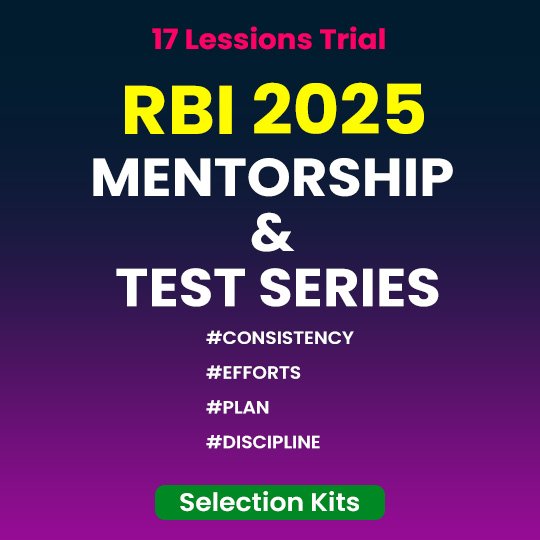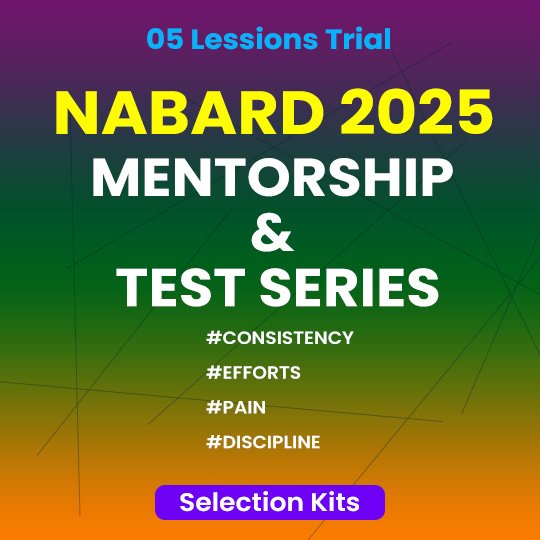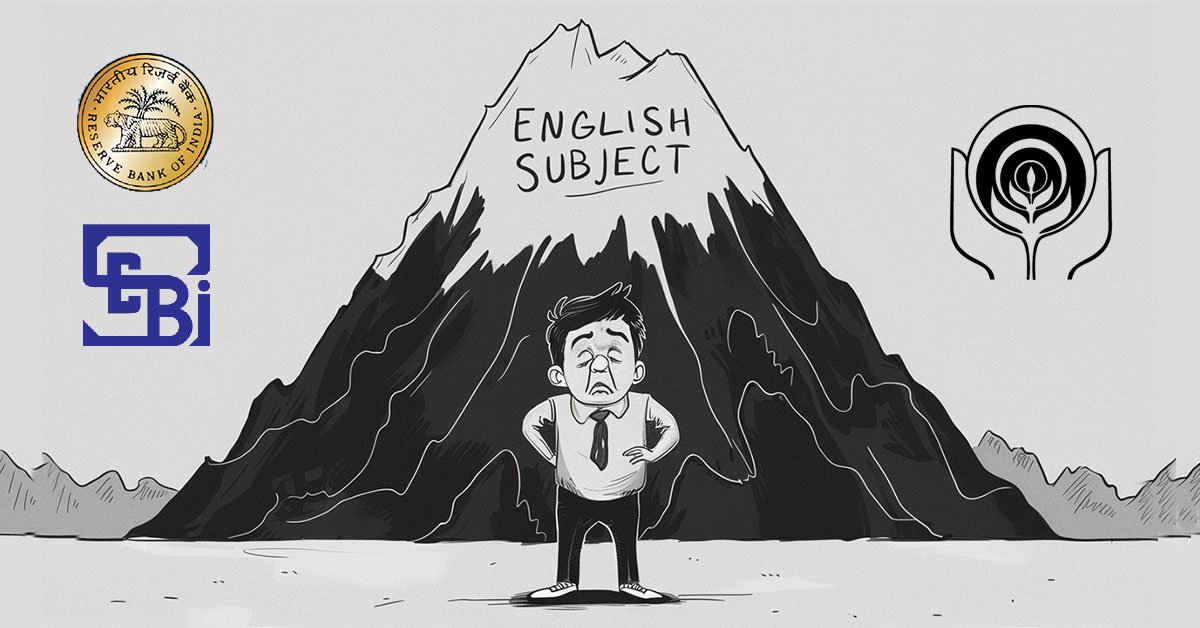Daily Current Affairs Quiz
11&12 November, 2025
National Affairs
1. Janjatiya Gaurav Varsh 2025
Source: PIB
Context:
Nationwide celebrations under Janjatiya Gaurav Varsh 2025 have commenced to mark two significant milestones — the 150th birth anniversary of Bhagwan Birsa Munda, revered as Dharti Aaba, and 150 years of the national song “Vande Mataram.”
About Janjatiya Gaurav Varsh 2025
- A year-long nationwide celebration honouring India’s tribal freedom fighters and their immense contribution to the country’s independence and cultural fabric. The initiative highlights the legacy of Bhagwan Birsa Munda and commemorates 150 years of “Vande Mataram,” reinforcing the spirit of patriotism and unity.
- It aims to showcase tribal heritage, resilience, and contribution to India’s nation-building process.
Organisations Involved:
- Nodal Ministry: Ministry of Tribal Affairs (MoTA)
- Supported by: Tribal Research Institutes (TRIs), State Governments, Eklavya Model Residential Schools (EMRS), and various cultural institutions.
Aim:
- To celebrate India’s tribal heritage, patriotism, and unity while deepening the ideals of Sabka Saath, Sabka Vikas, Sabka Vishwas, Sabka Prayas.
- The initiative promotes cultural inclusivity, awareness of tribal history, and recognition of tribal heroes who played a vital role in India’s freedom struggle.
2. Rural Unemployment Down, Urban Joblessness Up – PLFS Report
Source: TH
Context:
The Periodic Labour Force Survey (PLFS) for July-September 2025 highlights trends in employment, unemployment, and sectoral distribution across rural and urban India.
Key Highlights:
- Rural Unemployment
- Decline: Rural unemployment among persons aged 15+ fell from 4.8% in April-June 2025 to 4.4% in July-September 2025.
- Urban Unemployment
- Slight Increase: Urban unemployment edged up slightly, with male unemployment rising from 6.1% to 6.2% and female unemployment from 8.9% to 9.0% during the same period.
- Overall Unemployment
- Marginal Drop: The total unemployment rate for persons aged 15+ decreased from 5.4% to 5.2%.
- Rural Employment
- Self-Employment Dominance: Rural self-employment rose to 62.8% from 60.7%, with the majority engaged in agriculture (57.7%, up from 53.5%) due to seasonal operations.
- Urban Employment
- Wage/Salaried Jobs: Urban employment remains dominated by regular wage/salaried jobs, slightly increasing to 49.8% from 49.4%. The tertiary sector employs 62% of urban workers.
- Labour Force Participation
- Female Participation Increase: Overall female LFPR rose to 33.7% from 33.4%, driven by rural female LFPR increasing to 37.5% from 37%.
- Total Workforce
- Numbers: About 56.2 crore persons aged 15+ were employed in July-September 2025, including 39.6 crore males and 16.6 crore females.
3. Exercise Malabar 2025
Source: PIB
Context:
Indian Naval Ship (INS) Sahyadri has reached Guam in the Northern Pacific Ocean to participate in Exercise Malabar 2025, reaffirming India’s commitment to maritime cooperation, regional stability, and strategic interoperability among the Quad nations — India, the United States, Japan, and Australia.
About Exercise Malabar 2025
Exercise Malabar is a multilateral naval exercise that brings together the navies of India, the United States, Japan, and Australia. It serves as a premier platform to enhance maritime security coordination, interoperability, and joint operational capabilities among the participating nations in the Indo-Pacific region.
Origin:
- Started in 1992 as a bilateral naval drill between India and the United States.
- Japan joined as a permanent member in 2015, followed by Australia in 2020, expanding the scope of the exercise into a Quad-level maritime engagement.
History and Evolution:
- Over the past three decades, Exercise Malabar has transformed from basic search-and-rescue and communication drills to complex multi-domain naval warfare operations.
- The exercise is hosted rotationally by the four member nations, reflecting the principle of shared responsibility for Indo-Pacific security.
Nations Involved:
- India
- United States
- Japan
- Australia
These four represent the Quad (Quadrilateral Security Dialogue) — an alliance focused on promoting a free, open, and rules-based Indo-Pacific.
2025 Host:
- Guam, a strategic U.S. island territory in the Western Pacific, is hosting Malabar 2025, which includes both harbour and sea phases of operations.
4. India–Sri Lanka Joint Military Exercise ‘Mitra Shakti XI–2025’
Source: TH
Context:
The 11th edition of the India–Sri Lanka Joint Military Exercise “Mitra Shakti XI–2025” has commenced at the Foreign Training Node, Belagavi (Karnataka). The exercise underscores the two nations’ shared commitment to strengthening regional security, military cooperation, and interoperability under UN peacekeeping mandates.
About Exercise Mitra Shakti XI – 2025:
‘Mitra Shakti’ is a bilateral joint military exercise held annually between the Indian Army and the Sri Lankan Army. It aims to enhance defence cooperation, improve interoperability, and foster mutual understanding between the two forces in conducting sub-conventional and peacekeeping operations.
- Host:
- Foreign Training Node, Belagavi, Karnataka.
Nations Involved:
- India: 170 personnel from the Rajput Regiment.
- Sri Lanka: 135 personnel from the Gajaba Regiment.
Aim:
- To rehearse sub-conventional operations under Chapter VII of the UN Charter, focusing on:
- Counter-terrorism operations,
- Peacekeeping missions, and
- Humanitarian assistance and disaster relief (HADR).
5. Delhi Enforces GRAP Stage III
Source: News on Air
Context:
The Delhi government has implemented Stage III of the Graded Response Action Plan (GRAP-III) after the city’s Air Quality Index (AQI) crossed 400, entering the ‘Severe’ category for the first time this season. The move comes as part of the region’s coordinated air pollution control strategy to curb emissions and safeguard public health.
About Graded Response Action Plan (GRAP):
The Graded Response Action Plan (GRAP) is a dynamic and adaptive pollution-control framework designed to combat air pollution in the National Capital Region (NCR). It prescribes stage-wise actions based on daily AQI readings to ensure timely intervention.
Established In: 2017, following directions from the Supreme Court of India, based on recommendations of the Environment Pollution (Prevention and Control) Authority (EPCA).
Organisation Involved:
Implemented by the Commission for Air Quality Management (CAQM) in coordination with:
- Central Pollution Control Board (CPCB)
- Delhi Government
- State Pollution Control Boards of Haryana, Uttar Pradesh, and Rajasthan.
Aim: To reduce air pollution in Delhi-NCR through graded, coordinated, and evidence-based actions, thereby protecting public health and aligning with the National Clean Air Programme (NCAP) objectives.
Key Features:
- Four-Stage Response System (Based on AQI Levels):
- Stage I: Poor (AQI 201–300)
- Stage II: Very Poor (AQI 301–400)
- Stage III: Severe (AQI 401–450)
- Stage IV: Severe+ (AQI >450)
- Progressive Restrictions:
- Each stage includes measures from all preceding stages.
- Stage III Measures Include:
- Ban on construction and demolition activities (except essential projects).
- Prohibition of BS-III petrol and BS-IV diesel vehicles in Delhi-NCR.
- Closure of primary schools up to Class 5.
- Encouragement of work-from-home and carpooling to reduce vehicular load.
- Exemptions:
- Essential services (healthcare, defence, metro, railways, sanitation) continue but must follow strict dust and emission control norms.
Banking/Finance
1. Banks Seek Lower Stage-II Provision Floor under RBI’s Draft ECL Framework
Source: BS
Context:
Indian banks are preparing to approach the Reserve Bank of India (RBI) seeking a reduction in the proposed Stage-II provisioning floor under the Expected Credit Loss (ECL) framework. The ECL-based loan-loss provisioning system, aligned with global accounting standards (IFRS 9), is proposed to come into effect from April 1, 2027, replacing the current incurred-loss model.
About the ECL Framework
The Expected Credit Loss (ECL) framework is a forward-looking provisioning system that requires banks to estimate and set aside funds based on the probability of future loan defaults, rather than waiting for an actual default to occur.
It aims to enhance the accuracy and timeliness of credit risk recognition, thereby strengthening financial stability and transparency in banking operations.
Objective:
- To shift from a reactive incurred-loss model (which recognises losses after default) to a proactive model that anticipates potential credit losses.
- To ensure that banks build adequate buffers for credit risk earlier in the loan cycle.
- To align Indian banking standards with International Financial Reporting Standard (IFRS 9).
Background: Understanding the Three Stages
Under the RBI’s draft ECL norms, banks must classify loans based on changes in credit risk since initial recognition:
- Stage-I: Financial instruments that have not experienced a significant increase in credit risk (SICR) since origination or are of low credit risk. Banks must provide for 12-month expected credit losses.
- Stage-II: Instruments that have experienced a SICR since origination but are not yet credit-impaired. Banks must provide for lifetime expected credit losses.
- Stage-III: Financial instruments that are credit-impaired as of the reporting date. Banks must continue to provide for lifetime expected credit losses, similar to Stage II, but with higher provisioning intensity.
Key Concern: Sharp Rise in Stage-II Provisioning
- The draft norms propose a minimum 5% provisioning floor for Stage-II loans, up from the current 0.4% requirement applied to SMA-1 and SMA-2 (Special Mention Account) loans.
- This would lead to a substantial increase in provisioning burden, especially for banks with larger stressed retail and MSME portfolios.
Draft ECL Framework – At a Glance
| Parameter | Current System | Proposed ECL Framework |
|---|---|---|
| Basis | Incurred Loss | Expected Credit Loss (forward-looking) |
| Stage-I Provision | ~0.25–0.40% | No major change expected |
| Stage-II Provision | 0.4% (SMA-1, SMA-2) | 5% (proposed) |
| Stage-III (Impaired Loans) | 15%–100% (based on asset quality) | Expected to continue |
| Transition Start | — | April 1, 2027 |
| Transition Period | — | 4 years (till FY31) |
2. IRDAI Chief Urges Insurers to Build Trust Through Transparency and Good Governance
Source: TOI
Context:
On the occasion of the First Insurance Lokpal Day (November 11, 2025), Ajay Seth, Chairman of the Insurance Regulatory and Development Authority of India (IRDAI), emphasized that trust, transparency, and responsible conduct are the cornerstones of a robust insurance sector.
About Bima Bharosa Platform
The Bima Bharosa platform is IRDAI’s integrated online grievance redressal system that enables policyholders to register, track, and resolve insurance-related complaints across all insurers in India.
Purpose: To ensure transparency, accountability, and timely resolution of consumer grievances in the insurance sector.
Key Features:
- Centralised complaint portal: Allows customers to file grievances related to life, health, or general insurance.
- End-to-end tracking: Consumers can monitor the progress of their complaint online.
- Direct linkage: Connects with the grievance redressal officers of insurance companies for faster response.
- Performance monitoring: IRDAI tracks insurer response times and resolution rates through the portal.
Role of Bima Lokpal and the Ombudsman Network
The Bima Lokpal (Insurance Ombudsman) is a quasi-judicial authority that provides free and impartial dispute resolution for policyholders dissatisfied with the insurer’s response or grievance outcome.
Legal Basis: Established under the Redressal of Public Grievances Rules, 1998, and supervised by IRDAI.
Key Functions:
- Addresses complaints related to delayed claim settlements, policy cancellations, unjustified denials, or non-issuance of policy documents.
- Provides a non-litigious alternative to approaching consumer courts or civil courts.
- Ensures fair hearing and quick redressal within prescribed timelines.
Focus on Rural and Semi-Urban Expansion
IRDAI’s Vision 2047 – “Insurance for All”:
- Aims to ensure that every Indian citizen and enterprise is protected by insurance by 2047.
- Emphasises financial inclusion, awareness, and accessibility of insurance products in rural and semi-urban areas.
Key Focus Areas:
- Expanding distribution networks through micro-insurance agents, digital channels, and cooperative societies.
- Educating consumers about their rights and available grievance mechanisms.
- Strengthening Bima Vahaks and Bima Vistaar initiatives to promote last-mile insurance penetration.
3. Ageas Federal Life Insurance Partners with Muthoot Microfin to Expand Insurance Access in Underserved India
Source: BL
Context:
In a strategic move to deepen life insurance penetration in non-metro and underserved regions, Ageas Federal Life Insurance has entered into a distribution partnership with Muthoot Microfin Ltd, one of India’s leading microfinance institutions. The collaboration aligns with IRDAI’s “Insurance for All by 2047” vision and aims to bridge the country’s significant protection gap.
Key Highlights:
- Customer Reach: Muthoot Microfin serves millions of women entrepreneurs and small business owners, providing a strong base for insurance penetration.
- Product Integration: Life insurance offerings will be bundled with existing financial products such as home loans, business loans, and SME credit solutions.
- Digital Enablement: The partnership supports Ageas Federal’s digital-first distribution strategy, using technology for onboarding, servicing, and claim processing.
- Focus Segment: Underserved and emerging markets—especially rural and semi-urban geographies—will be prioritised.
4. Sahakar Digi Pay and Sahakar Digi Loan Apps
Source: IE
Context:
Union Cooperation Minister Amit Shah on Monday launched two new digital platforms — Sahakar Digi Pay and Sahakar Digi Loan — aimed at driving the digital transformation of urban cooperative banks (UCBs) and enhancing their competitiveness in India’s increasingly cashless economy. The launch took place during a two-day International Conference on the Urban Cooperative Credit Sector in New Delhi.
About the Initiatives
Sahakar Digi Pay
- What it is: A digital payments platform designed exclusively for Urban Cooperative Banks (UCBs).
- Purpose: To facilitate real-time, secure, and interoperable payment solutions for cooperative bank customers.
- Key Features:
- Integration with UPI, NEFT, RTGS, and RuPay ecosystems.
- Enables instant fund transfers and merchant transactions within cooperative networks.
- Aims to reduce dependence on private fintech intermediaries by building an indigenous cooperative fintech framework.
Sahakar Digi Loan
- What it is: A digital lending platform developed to streamline and digitize the loan processing and disbursal system for UCBs.
- Purpose: To promote paperless, time-bound credit delivery, improving customer experience and loan turnaround times.
- Key Features:
- Automated credit appraisal and documentation workflows.
- Integration with Aadhaar, PAN, and Credit Bureau databases for quick verification.
- Enables online loan sanctioning, enhancing transparency and reducing manual intervention.
Objectives of the Launch
- To modernize the cooperative banking ecosystem through digital empowerment.
- To enhance financial inclusion by enabling small cooperative banks to compete with commercial and digital banks.
- To strengthen the “Sahakar Se Samriddhi” vision by promoting technology-led growth in cooperatives.
- To align the cooperative sector with Digital India and Cashless Economy goals.
5. RBI’s Current Account Curbs Stir Rift Between Private and Public Sector Banks
Source: Mint
Context:
The Reserve Bank of India’s (RBI) new proposal to tighten current account rules for large borrowers has triggered a divide between private and public sector banks within the Indian Banks’ Association (IBA). The move, aimed at curbing fund diversion and improving credit discipline, could reshape the flow of low-cost deposits and transaction banking revenues across India’s banking system.
About the RBI’s Proposed Rule
- What’s proposed:
- Only two banks, each holding at least 10% of the total banking exposure to a borrower with outstanding loans of ₹10 crore or more, will be allowed to open current accounts for that borrower.
- Objective:
- To prevent fund diversion and ensure that all cash flows of a borrower are visible to its primary lenders, enhancing credit discipline and transparency.
- Effective timeline:
- Yet to be finalized; RBI released the draft for stakeholder comments in October 2025.
Rationale Behind the Move
- Borrowers often maintain current accounts with non-lending banks, which masks their true cash flows and enables possible fund diversion.
- The rule aims to strengthen supervision over borrowers’ liquidity management and ensure that lending banks have complete visibility into fund movement.
Private Banks’ Concerns
- Loss of Low-Cost Deposits:
Private banks fear losing a large portion of current account deposits (no interest-bearing funds), which are key to maintaining low-cost CASA ratios. - Competitive Disadvantage:
Since public sector banks (PSBs) are usually lead lenders in consortiums, they will likely dominate current account relationships. - Reduced Customer Choice:
Borrowers will have fewer options for transaction banking services, hurting competition and efficiency. - Liquidity Impact:
Restricting current accounts could affect cash management and fee income, particularly for banks specializing in digital collection and payment solutions.
Regulatory Perspective
- RBI maintains that multiple current accounts for the same borrower increase the risk of fund diversion.
- The framework follows earlier 2020 directives that restricted non-lending banks from maintaining current accounts for borrowers.
- The current proposal refines those norms to ensure greater lender control while permitting collection accounts (for receipts), provided funds are remitted to the main current account within two working days.
6. NUCFDC Moves to Obtain SRO Status for Urban Cooperative Banks
Source: Mint
The National Urban Cooperative Finance and Development Corporation (NUCFDC) is planning to seek Self-Regulatory Organisation (SRO) status from the Reserve Bank of India (RBI) within the next two months, following the near completion of its capital augmentation to ₹300 crore, a key eligibility criterion.
About NUCFDC
- Full Form: National Urban Cooperative Finance and Development Corporation Ltd.
- Established: Licensed as a mid-layer NBFC in February 2024.
- Ownership Structure:
- 20% equity: National Cooperative Development Corporation (NCDC)
- 80% equity: Participating Urban Cooperative Banks (UCBs)
- Objective: To function as the umbrella organisation for UCBs, promoting financial stability, digital transformation, and sector-wide standardisation.
Key Highlights:
- Capital Mobilisation & SRO Ambition
- NUCFDC’s paid-up capital will soon exceed ₹300 crore, qualifying it to seek SRO recognition from RBI.
- Board resolutions for capital contributions from UCBs have been passed, and inflows are expected by 17 November 2025, with share allotments beginning mid-December.
- The SRO status will empower NUCFDC to act as a regulatory and oversight body for the UCB sector, complementing RBI’s supervision.
- Sectoral Representation
- So far, 440 out of 1,462 UCBs have joined the initiative.
- These banks account for 70% of the ₹5.5 trillion total deposit base of the UCB sector—representing significant scale for collective bargaining and sectoral coordination.
- Fund-Based Services
- With the new capital base, NUCFDC plans to launch fund-based operations, including:
- Short-term liquidity support
- Tier-II capital support
- Refinance facilities for UCBs
- Infrastructure loans for technology upgradation
- The corporation will leverage its capital up to seven times to raise funds from markets for lending and refinancing operations.
- With the new capital base, NUCFDC plans to launch fund-based operations, including:
- Digital Push: Sahakar DigiPay & Sahakar DigiLoan
- Two major digital initiatives launched to strengthen UCBs’ digital infrastructure:
- Sahakar DigiPay:
- A cost-efficient payments platform (costing just 50 paisa per transaction)
- Fully interoperable with UPI, IMPS, and RuPay through NPCI backend integration
- Aims to modernize UCB payment operations and attract younger, tech-savvy customers
- Sahakar DigiLoan:
- Designed to automate lending workflows, improving speed, compliance, and credit risk management
- Sahakar DigiPay:
- These digital platforms are expected to standardize IT systems and reduce operational costs across the cooperative banking ecosystem.
- Two major digital initiatives launched to strengthen UCBs’ digital infrastructure:
- Future Vision: Digital Banking for Smaller UCBs
- NUCFDC plans to seek RBI approval to allow digital banking services by smaller UCBs (net worth < ₹50 crore), provided they operate through NUCFDC’s secure digital infrastructure.
- Upcoming features include AI-enabled analytics, cybersecurity frameworks, and data-driven decision tools to strengthen risk management.
Self-Regulatory Organisation (SRO)
A Self-Regulatory Organisation (SRO) is an entity empowered to regulate, supervise, and enforce standards within a specific sector, while functioning under the oversight of the primary regulator—in this case, the Reserve Bank of India (RBI).
Key Functions of an SRO in the financial sector (like NUCFDC for UCBs):
- Regulatory Oversight: Monitor member institutions for compliance with rules, policies, and prudential norms.
- Standard Setting: Formulate and enforce operational, governance, and ethical standards.
- Capacity Building: Provide training, guidance, and support to member institutions.
- Grievance Redressal: Act as an intermediary for resolving disputes within the sector.
- Bridge with Regulator: Serve as a liaison between member institutions and the central regulator (RBI), helping implement policies effectively.
Eligibility Criteria for an SRO under RBI Guidelines
While RBI does not have a single rigid template for all SROs, typical criteria include:
- Capital Requirement:
- The organisation must meet a minimum paid-up capital threshold—for NUCFDC, this is ₹300 crore.
- Sectoral Representation:
- Must represent a significant proportion of the sector, ensuring collective accountability and wide participation.
- NUCFDC currently has 440 UCB partners, representing 70% of the sector’s deposit base.
- Regulatory Compliance:
- Existing operations should comply with RBI regulations, including corporate governance, financial reporting, and prudential norms.
- Operational Capability:
- Ability to monitor, train, and guide member institutions, including technological and digital infrastructure support.
- Legal Structure:
- Incorporated as a company or entity capable of undertaking regulatory functions, with statutory backing or MoU with the regulator.
- Transparency and Accountability:
- Mechanisms for reporting, auditing, and grievance redressal must be in place.
Agriculture
1. Union Agriculture Minister to Inaugurate “Watershed Mahotsav” in Guntur, Andhra Pradesh
Source: IE
Context:
The Union Minister of Agriculture and Farmers’ Welfare will inaugurate the Watershed Mahotsav in Guntur, Andhra Pradesh, on November 11, 2025. The event highlights India’s focus on community-led watershed management, soil conservation, and sustainable water resource use to strengthen rural livelihoods.
About Watershed Mahotsav:
The Watershed Mahotsav is a national festival celebrating Jan Bhagidari (public participation) in watershed development. It aims to unite farmers, local communities, policymakers, and experts to promote holistic soil and water conservation practices across rainfed and drought-prone regions of India.
Origin:
- The initiative is part of the National Watershed Conference 2025, organised by the Department of Land Resources (DoLR) under the Ministry of Rural Development.
- It aligns with the government’s broader vision of Mission Life and Sustainable Agriculture, promoting efficient natural resource management.
Objectives:
- Foster community ownership and participation in watershed management.
- Restore degraded ecosystems through integrated land and water resource management.
- Strengthen rural livelihoods and ensure water security for rainfed farming systems.
Key Features:
- Mission Watershed Revitalisation:
- Focus on repairing and rejuvenating old watershed structures to improve water retention and soil health.
- Integration with MGNREGA:
- Utilises MGNREGA funds for labour-intensive watershed and soil conservation works, ensuring sustainable rural employment.
- Community Initiatives:
- Activities include shramdaan (voluntary labour), tree plantation drives, and local-level competitions.
- Launch of the Watershed Jan Bhagidari Cup 2025 to recognise best-performing community watershed projects.
- Focus Areas:
- Rainfed area development, water harvesting, afforestation, and spring-shed rejuvenation in hilly and semi-arid zones.
- Promotion of climate-resilient agriculture through efficient water use and drought-proofing measures.
Facts To Remember
1 Samrat shoots down gold at Worlds, Tomar clinches bronze
Samrat Rana, left, clinched India’s maiden gold in an Olympic event, winning the 10m air pistol with 243.7 points, at the ISSF World Championships in Cairo while Varun Tomar took bronze. Tomar (221.7) ended behind China’s Kai Hu (243.3).
2. Amitabh Singh Appointed CHRO of IndusInd Bank
IndusInd Bank has appointed Amitabh Kumar Singh as Chief Human Resources Officer (CHRO), effective November 10, 2025.
3. Women Are the ‘Largest Minority’, Says Supreme Court
During a hearing on a petition challenging the delay in implementing the Nari Shakti Vandan Adhiniyam (Constitution 106th Amendment Act, 2023), the Supreme Court observed that despite making up nearly half of India’s population, women remain significantly under-represented in Parliament and State legislatures.
4. Bhutan, India inaugurate Kālacakra Empowerment ceremony for Global Peace
Prime Minister Narendra Modi concluded a successful two day state visit to Bhutan. During the visit, Prime Minister Modi, along with the King of Bhutan and the Fourth Druk Gyalpo, inaugurated the Kālacakra or ‘Wheel of Time’ Empowerment ceremony.
5. India to get 8 Cheetahs from Botswana
President Droupadi Murmu held bilateral talks with President Duma Boko of Botswana in Gaborone today and discussed several bilateral, regional and global issues of mutual interest.
6. November 12: Celebrating Public Service Broadcasting Day
Today is Public Service Broadcasting Day. This day is observed on the 12th of November every year to mark the historic address of Father of the nation and freedom Fighter Mahatma Gandhi
7. 22nd CPA India Region Zone-III Conference concludes in Nagaland
The two-day 22nd Commonwealth Parliamentary Association (CPA) India Region Zone-III Conference in Nagaland concluded this evening.
8. NHRC launches Online Internship Programme for students
The National Human Rights Commission (NHRC) began its two-week Online Short Term Internship Programme (OSTI) for November 2025.
9. Union Minister Shivraj Singh Chouhan Inaugurates Restored Vengalayapalem Pond in Andhra Pradesh
As part of the Watershed Mahotsav celebrations, Union Minister for Rural Development, Agriculture and Farmers’ Welfare Mr. Shivraj Singh Chouhan today inaugurated the 21-acre Vengalayapalem pond in Guntur District, Andhra Pradesh.
















